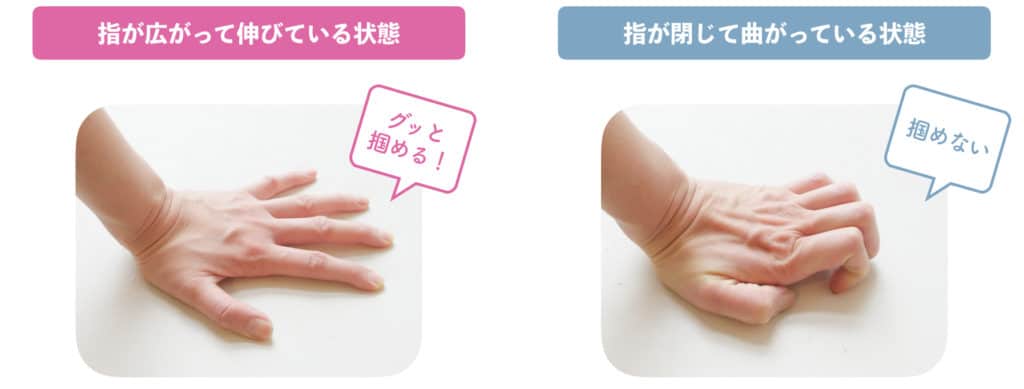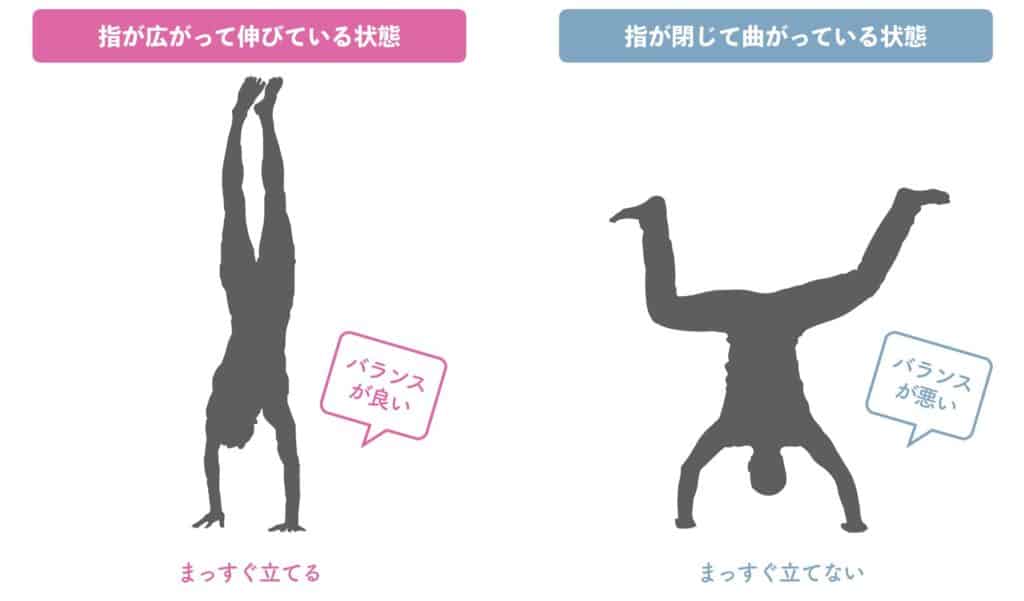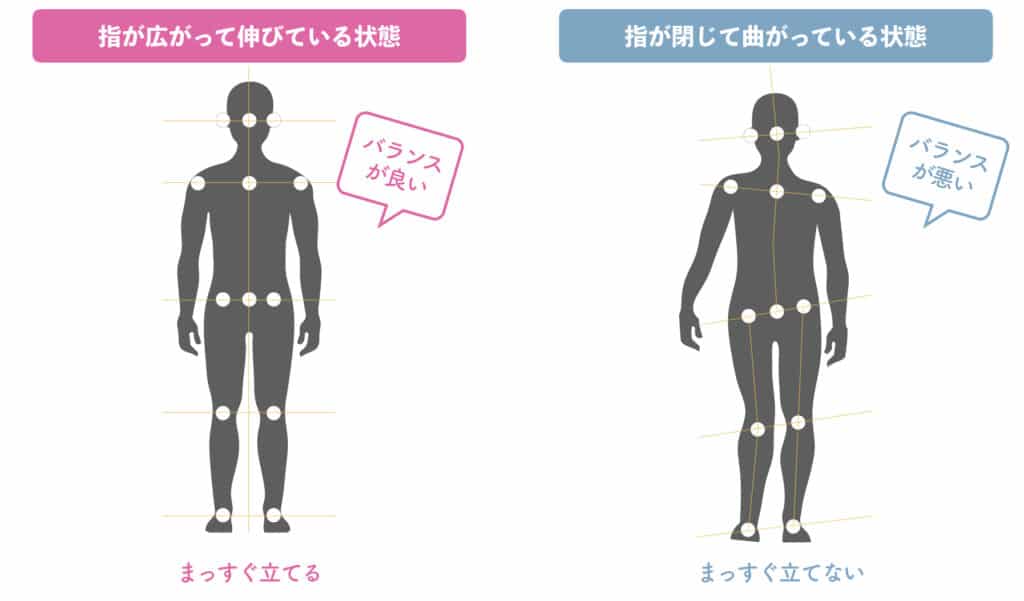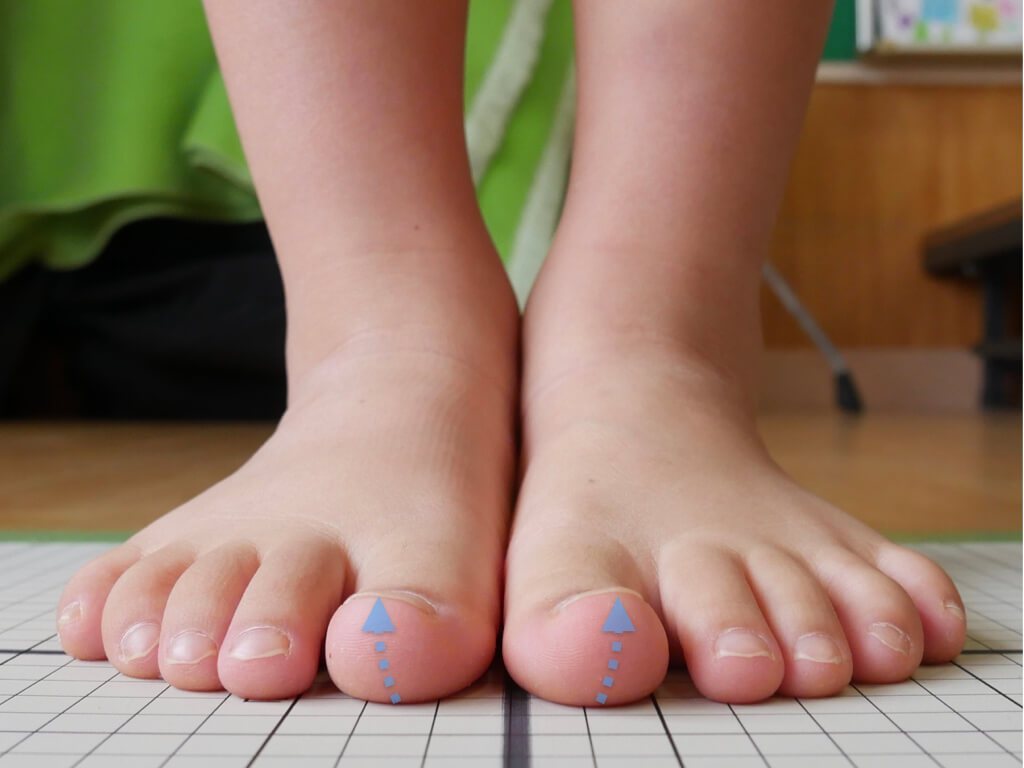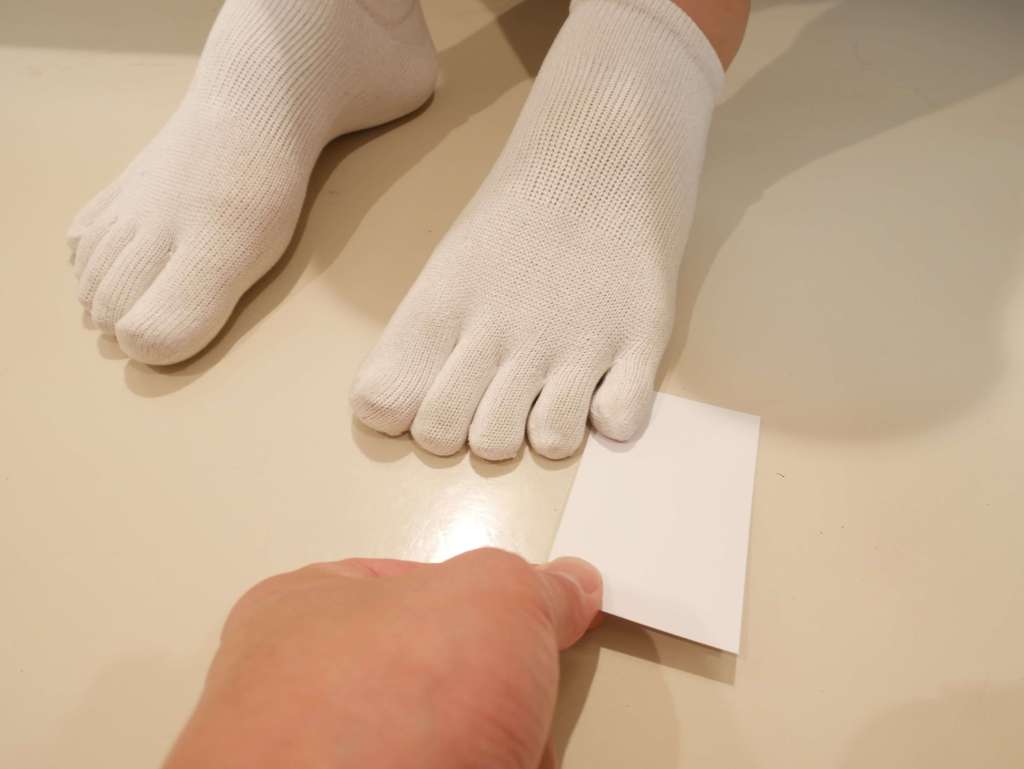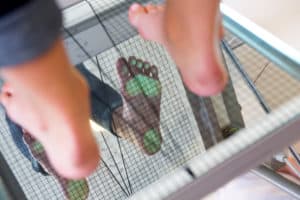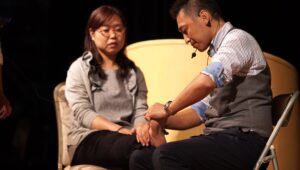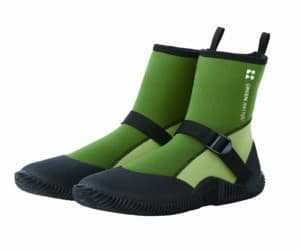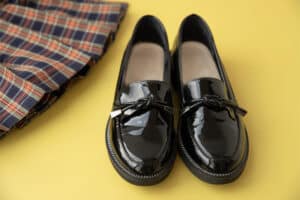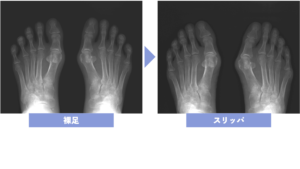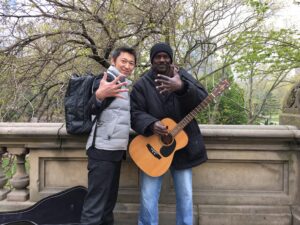第2話|「浮き指」で膝痛に
関節リウマチではなかった
関節リウマチの方が来院
妻のO脚に気をよくした私は、人の足元ばかりを見るようになりました。そんな折、関節リウマチと診断され、膝の痛みを訴える女性が来院されました。投薬治療を施されていましたが、痛みはいっこうに治まらず、不安でたまらないご様子。
足元を見ると小指が地面についておらず、わずかに浮いていました。いわゆる「浮き指」です。フットプリント(足型)を取ると、その濃淡から、足指が接地しておらず、かかとに重心が移っていることが分かりました。
なぜ浮き指はよくないのでしょうか
逆立ちをするとき、ぎゅっと床をつかむように手の指を曲げたり、浮かせる人はいません。指はピンと伸びたままです。一本でも曲げると途端にバランスを失い、逆立ちができなくなります。
逆立ちした手を「足」と考える
手を「足」に置き換えると、手首は足首、ひじは膝、肩は股関節にあたります。足指がしっかり伸びてひらいた状態であれば、人はまっすぐに立てます。ところが残念なことに、ほとんどの現代人は、間違った靴の選び方、履き方などによって足指が変形し、土台が崩れています。
足指変形で不自然な力が
足には強大な筋肉が付いているので、足指を曲げて立つことはできます。それでも足元が不安定な状態で歩くと、足はもちろん、腰から上の筋肉も余分な力を使ってバランスを取ろうとします。そこにかかる不自然な力がひざ痛や腰痛、骨格のゆがみにつながるわけです。
そう考えると、ただすべきは痛む部位より、支える土台の方。足指が伸びて土台が安定すれば、おのずと改善する可能性が高まります。
足指のトレーニングで回復!
この方には、自宅でできる足指の機能訓練を指導しました。すると2週間後の再診時、ひざ痛はうそのように消えていました。浮いていた小指も地面に接地しています。きちんと歩けるようになったこの方の安堵の表情に私も救われました。
女性のみならず男性にも多く見られる浮き指は、足に合わない靴や歩き方の問題で起こります。家庭でチェックするするときは、はだしで立った状態で、小指を横から見て、浮いているかどうかで判断してください。浮き指とは、足指が地面から離れている状態、もしくは足指の圧が小さい状態のことをいいます。また、外反母趾(がいはんぼし)や内反小指(ないはんしょうし)によって2〜3指が左右から押されて浮くこともあります。
あなたの足指は変形していませんか?
親指の浮き指
真正面から親指を見て、爪が見えない状態、もしくは他の爪の向きと違って上に反り上がっている状態であれば浮き指です。フットプリントをとると、親指が1/3〜2/3程度しか映りません。また、靴下のつま先部分が破けやすいことも特徴です。深爪をする方に多く見られます。
ペーパーテストといって、靴下を履いたまま椅子に腰掛けた状態で親指の下に紙を入れ、親指で紙を押さえます。それを引っ張って紙が抜けるようであれば浮き指です。
小指の浮き指
紙を小指の下に入れてスカスカ入るようであれば浮き指です。小指の爪が変色していたり、爪が小さくなっていることが多いです。
もしくは小指の部分に紙を入れたまま、小指だけの力で押さえてみてください。紙がが簡単に抜けるようであれば足指の圧がかかっていないことになり、歩いている時に小指は使えていない状態だと判断できます。
さて、足指の変形は浮き指だけではありません。次回は、その他の足指の変形について説明しますね。
ひろのば体操
足指を広げて(=ひろ)伸ばす(=のば)、足指と足のストレッチのこと。左右の足を合わせて1日1回、5分もやれば効果があります。
YOSHIRO SOCKS
足指専門の理学療法士として積み上げてきた20年間の知識や経験を生かし、足指を広げて伸ばす靴下を開発。人間本来の姿勢や運動能力に戻します。
Misdiagnosis of rheumatoid arthritis
After witnessing the drastic correction of my wife’s bowlegs, I began to focus on patients’ legs and feet when they visited the clinic. One day, a lady complaining of pain in her knees, who had previously been diagnosed with rheumatoid arthritis, paid us a visit.
This lady had been on medication for quite some time, but her pain had not receded and she seemed troubled. When I looked at her little toes, I noticed they were slightly raised off the ground, which we termed as “floating toes”. Her footprints indicated that she was preferentially balancing her weight on her heels.
What is wrong with floating toes? Well, when we do a handstand, none of us would bend or claw our fingers to grab the ground or lift some fingers off the floor. All our fingers should stay flat on the ground. Just bending one finger may result in a loss of balance and cause us to fall. The same thing happens with our toes.
Deformed toes are unnaturally strong
Our feet consist of strong muscles which enable us to stand even when our toes may be crooked. However, when we walk with unstable feet, our hips and the muscles of our upper body need to compensate for this instability to balance the body. This is the reason for the unnatural strain in the body that causes backache, knee pain and distortion of the bone structure.
I advised her to exercise her toes, which she could easily do at home. After three weeks, she returned for her follow-up consultation, and the pain in her knees had completely disappeared. I was so relieved at seeing her being able to walk again without any pain.
Floating toes are not only observed in females but also in males, and are caused either by improperly fitted shoes or by the way one walks. There is an easy check you can perform yourself at home: simply stand barefooted and note whether your little toes are raised off the ground when viewed from the side.
Floating toes are toes that are either raised off the ground or toes that exert very little pressure to the ground. Additionally, bunions and bunionnettes may cause a floating toes effect owing to the pushing-up of the middle toes as a result of the overcrowding.
A floating big toe
Viewing directly from the front and level with the floor, if you are unable to see your big toe’s nail or your big toe’s nail is pointing upwards compared with the other toenails, this can be defined as a floating big toe. In this case, the footprint would only show 1/3 or 2/3 of the big toe. This can also be evidenced by a tear in the sock in the big toe area and is observed in many people who cut their toenails too short.
A test using a piece of paper is one way to check for this deformity. The person to be tested should sit on a chair and a piece of paper is slid under their big toe. The person should use their toe to try and hold the paper to the floor. If it is easy to slide the paper out from under the toe, this is evidence of a floating big toe.
A floating little toe
Doing the same test as above for one’s little toe is the test for a floating little toe. Discolored toenails and/or tiny toenails are often indicators of this deformity.



